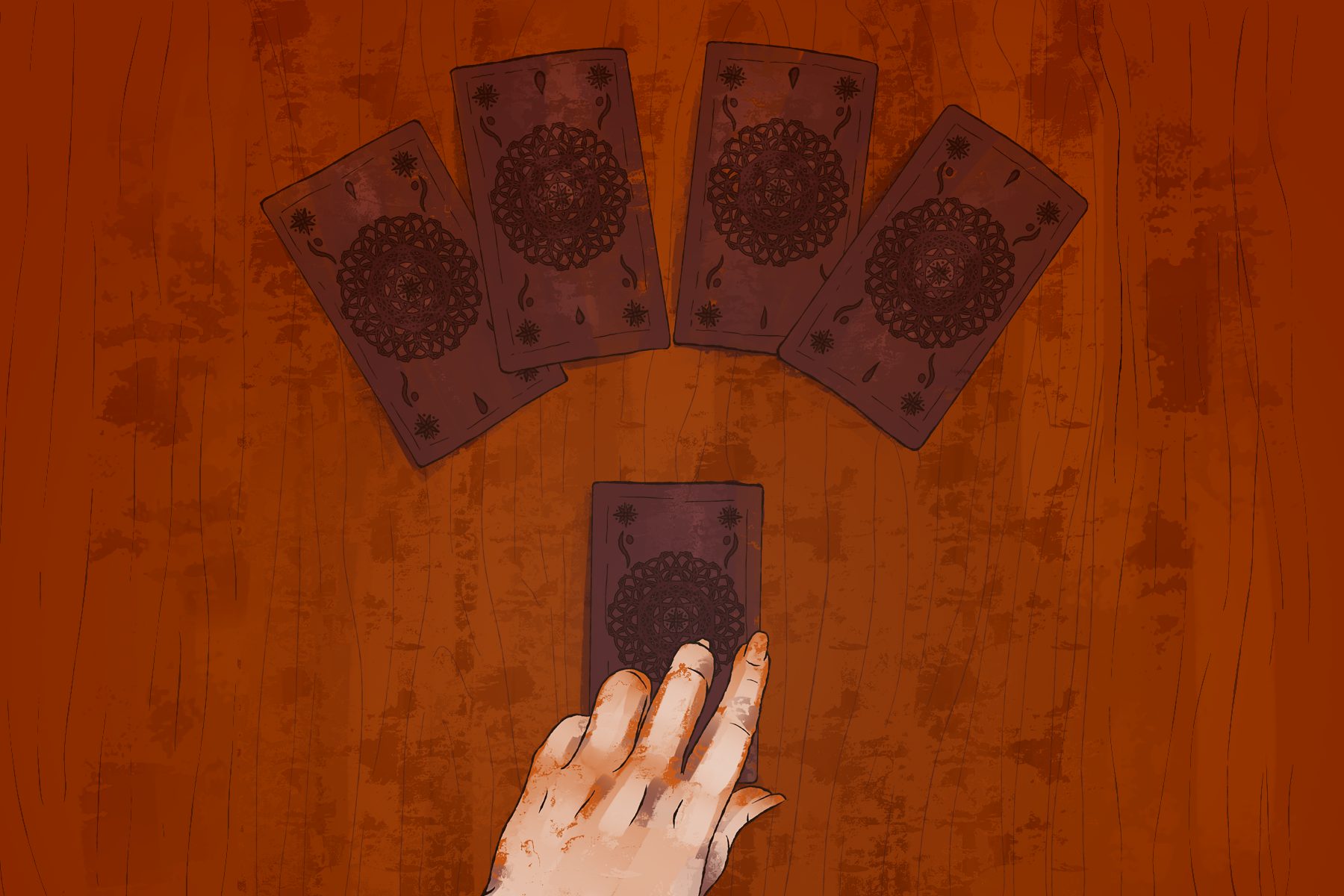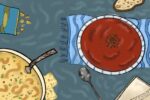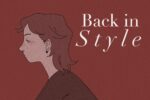Burning incense covers the room with a smoky security blanket, keeping all its secrets safely tucked away — the rare plastic crystal, the all-knowing grocery store tea leaves and the ancient thirty dollar book of wisdom. Essential oils permeate through the fog in a poignant and nauseating fashion. You wait amidst this fabricated mysticism for a shawl shrouded woman to appear with a deck of cards. She slowly lays down the tarot in a theatrical pattern of divination. Now it begins. Knowledge of your future just a card away. As her ringed fingers turn the first card, you catch your breath, anticipation high. The card is flipped. The woman quickly stands, hands flying to her mouth, she gasps in horror!
And, cut scene. This is not a Hollywood script, nor is tarot a charade of dramatics and quick-money schemes. Tarot cards do not divine fortunes nor summon demonic forces, despite the promises of corner store card readers and the warnings of certain televangelists. Tarot (pronounced teh-row) began, harmlessly, as an elaborately designed deck of playing cards. It was not until some savvy minds capitalized on its growing popularity by selling rumors and misinformation that tarot became far more complicated.
Islamic societies first brought traditional playing cards to Europe around 1375 where they became centerpieces for games and entertainment. “Tarocchi,” meaning triumph, was one such game in the 14th and 15th centuries in Italy, although most people are more familiar with its French incarnation of “tarot.” Elaborately designed tarocchi cards emerged when the Duke of Milan commissioned the creation of what has become known as the Visconti-Sforza deck in 1440. Without a printing press to mass reproduce cards, each one was handmade — and subsequently very expensive, relegating triumph cards to the upper classes.
The rise of occultism in the 18th century pushed tarot cards from an aristocratic game to a simple method of divination. As tarot gained popularity, some capitalized on its growing audience. Antoine Court de Gébelin, a French freemason and Protestant minister, for example, wrote a book linking tarot symbols to Egyptian lore and the god Thoth, despite no historical evidence suggesting such. Eliphas Lévi originated the now widely held idea that tarot symbols are connected to the Hebrew alphabet, effectively tying tarot with religious mysticism.
Misrepresentation and misinterpretation culminated when French occultist Jean-Baptiste Alliette released his 1791 tarot set meant specifically for divination. The spiritualist movement swept across Europe as mediums, séances and fortune telling captured the minds of their eager audiences. America’s spiritualist craze first encountered tarot in the 1900s when two groups, the Theosophical Society and the Rosicrucians, popularized card reading as an instrument of divine revelation. In 1909, Rider & Company Publishing produced the first deck readily available to the American public — the Rider-Waite.
A.E. Waite, a British member of the Christian occult group called the Hermetic Order of the Golden Dawn worked with fellow member and artist Pamela Colman Smith to create a new type of tarot deck. Smith used Sola Busca artwork as inspiration for her card’s designs and was the first to combine symbols with human characters in the minor arcana.
Tarot decks are split into two groups: the minor arcana and the major arcana. The minor arcana retains the four suits tradition from its playing card ancestors, although they take on a slightly different form. Instead of clubs, diamonds, hearts and spades, the minor arcana uses wands, swords, cups and pentacles (or stars). These cards are numbered one through 10 and include Kings, Queens, Pages and Knights as court cards. The major arcana represents larger concepts with depictions of Death, Wheel of Fortune, the Lovers, etc. These cards are numbers zero through 21, making a total tarot deck 78 cards.
The Rider-Waite, also called the Waite-Smith in appreciation of Pamela’s work, is the most recognizable deck in America culture and even inspired a Dior fashion line. After Dior incorporated the 1970s Motherpeace deck, created by Vicki Noble and Karen Vogel, sales for the deck shot up 263%. This follows the rising trend of tarot popularity. In 2017, tarot sale rose 30% after already rising 30% in 2016.
“Tarot projects have been on the rise for the last five years at least,” according to David Gallagher, senior director of communications at Kickstarter. “In 2013 there were 37 such projects. In 2017 there have been 88, including decks created with more diverse audiences in mind.” Decks like Wild Unknowns nods to climate change groups with its vivid natural images. Cristy Road, a Cuban American illustrator, designed a deck whose characters feature same-sex couples, people with disabilities, women in hijabs, the elderly and other underrepresented groups. And with U.S. Games reportedly selling over 123 varieties of tarot decks, the possibilities are endless.
The sudden resurgence of tarot is unsurprising given its shift away from fortune telling and toward mindful mediations during a time when social and cultural trends emphasize self-awareness. Yoga, mindful eating techniques and mental health campaigns all search for an inner self-awareness, which fits with tarot’s new conceptualization.
Lindsay Mack, a tarot reader in Brooklyn, told The New York Times that recently her customers seek readers for clarity, rather than for purposes of entertainment or a misguided attempt at divining the future. “Tarot is very trendy right now,” she said. “but more people are coming in with inquiries that are very thoughtful and beyond themselves.”
Responding to criticism of promoting pagan divination techniques, The Hermetic Order of the Golden Dawn released a statement clarifying tarot cards are a way to channel one’s focus, no different than prayer, music or literature. “The most powerful sources of information come from within,” they said. “The Tarot aids in coming in contact with one’s Higher Self.”
Tarot readers are not meant to answer with facts or clear-cut yes and no answers. When a querent, the person having their cards read, comes for a reading they need a clear head and open mind. Card readers offer advice and new perspectives on how to interpret a situation, but good readers, legitimate readers, never tell you how to think or what the future holds.
Some card readers describe tarot like the famous inkblot test used by psychologists. “When I’m reading the cards, it’s a little bit like a Rorschach test where I’m presenting images and then seeing how the querent reacts to them,” Fiona Lensvelt, a 31-year-old reader and author, told the Evening Standard. “I tell them what those signs and symbols are, what they mean to me, and it is then up to them to interpret them as they relate to their own life. It’s a little bit like a sort of mindfulness.”
But current social trends do not negate anyone’s personal feelings towards tarot. Whether one believes tarot are playing cards, divination tools, meditative tools or instruments of evil, tarot is what one makes of it.
















